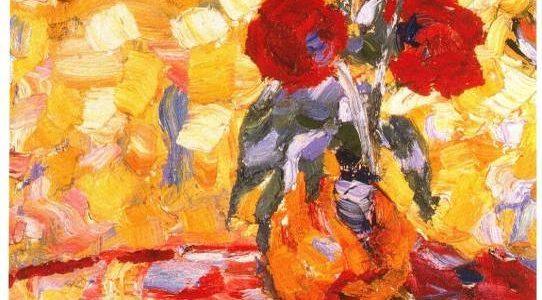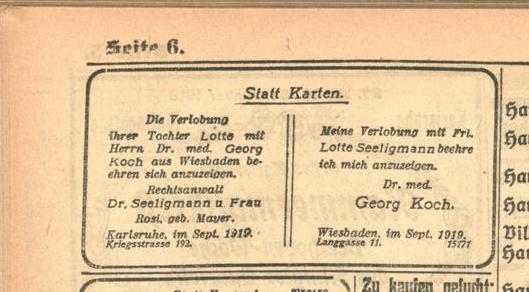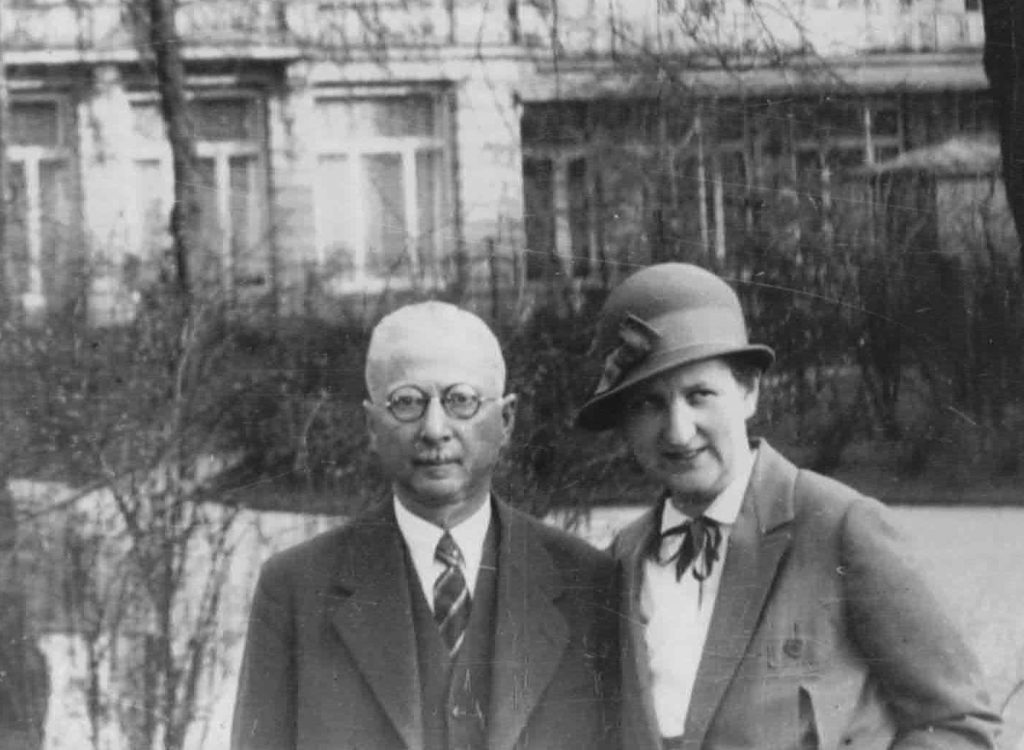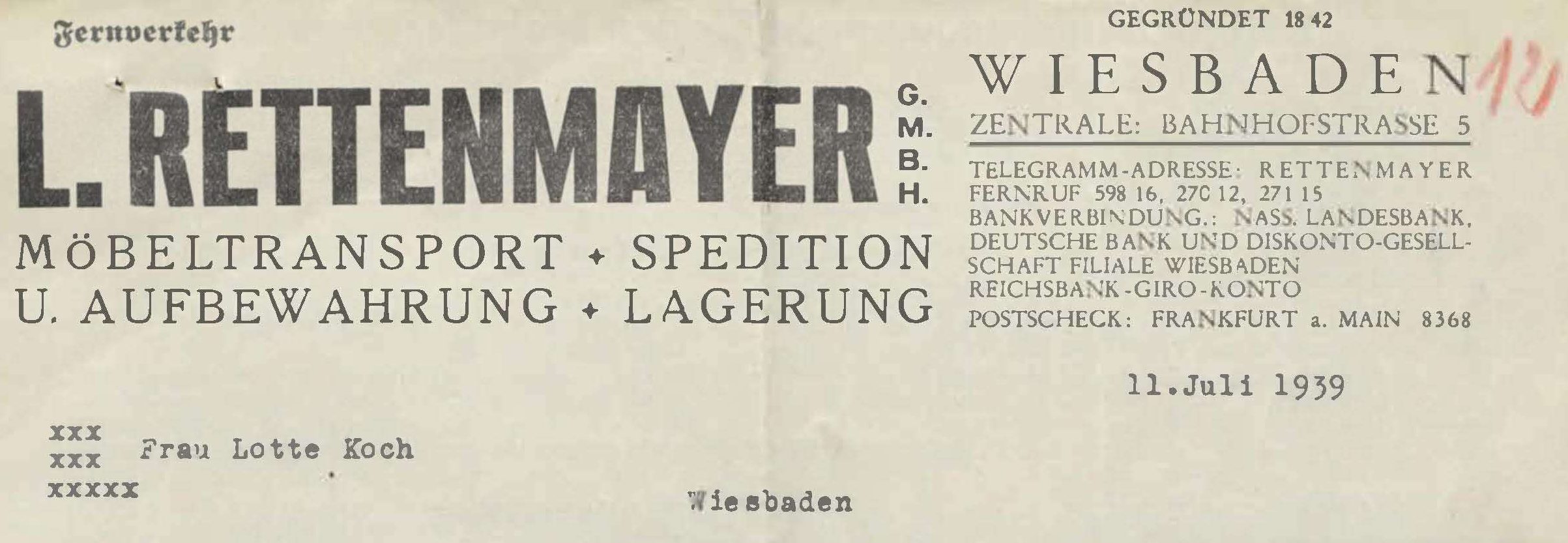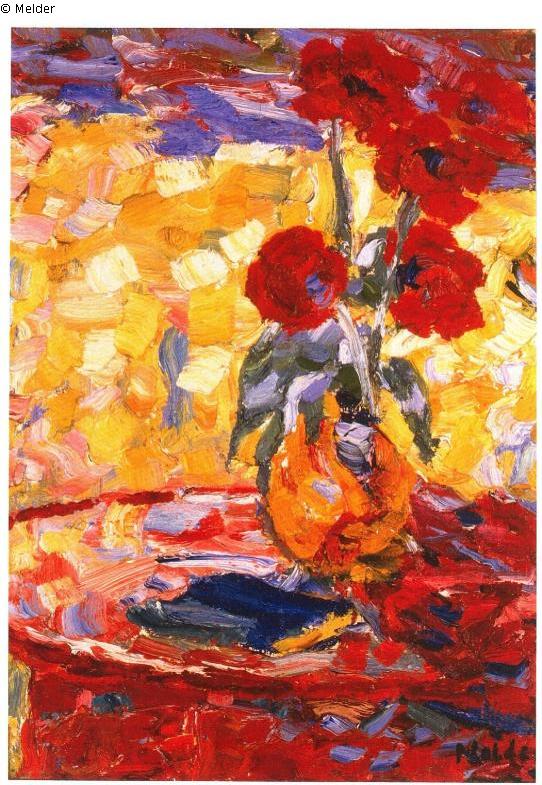

Works of Art within the Lift-Vans
Flämische oder Holländische Schule, Blumenstilleben mit Käfern und Schmetterlingen, 60 x 75 cm
Flämische oder Holländische Schule, Brustbild eines Jünglings, 40 x 55 cm
Flämische oder Holländische Schule, Kopf eines alten Mannes, Brustbild, 58 x 68 cm
Flämische oder Holländische Schule, Kühe, 20 x 25 cm
Flämische oder Holländische Schule, Stilleben, 20 x 30 cm
Flämische oder Holländische Schule, Wirtshausszene, 45 x 60 cm
Heimsdorf oder Oberammergauer Schule, Landschaft in Morgendämmerung, ohne Rahmen, 45 x 35 cm
Alexej von Jawlensky, Genfer See, ohne Maße
Alexej von Jawlensky, Spanierin; Dame mit Fächer, Höhe: 70 cm, Breite: 50 cm
Paul Klee, Farbensymphonie, Aquarell, Höhe: 25 cm, Breite: 20 cm
Emil Nolde, Kinderkopf; Mädchenbildnis, Aquarell Höhe: 25 cm, Breite: 20 cm
Christian Rohlfs, Strasse; Kind im Torbogen, 42 x 60 cm ohne Rahmen, Öl
Emil Nolde, Klatschrosen / Klatschmohn Höhe: 40,00 cm, Breite: 35 cm; 46 x 34,5 cm, Öl
Reconstruction of the Art Collection of Lotte and Georg Koch, Wiesbaden
Provenance Research Project in Collaboration with the Grandchildren of Lotte and Georg Koch, funded by the German Lost Art Foundation
The research project aimed to reconstruct the art collection of the pediatrician Dr. Georg Koch and his wife Lotte, née Seeligmann. The project started in January 2021 and was finished in February 2022.
Dr. Georg Koch and his wife Lotte lived in Wiesbaden and were interested in contemporary art and antiques.
Dr. Georg Koch was born in Mainz in 1890, the son of wine merchant Moritz II Koch and his wife Sophie Levy. Georg Koch studied medicine and, after participating as a soldier in World War I, worked as a doctor at the Municipal Maternity Clinic and Infant Maternity Center in Wiesbaden. In 1919 he married Anna Lotte Seeligmann, a native of Karlsruhe. She was the daughter of the lawyer Arnold Seeligmann and his wife Rosalie, née Mayer.
Georg and Lotte Koch were members of widely branched families who lived in Frankfurt am Main, Mainz and Karlsruhe – going back to the 17th century. Georg Koch had six siblings, Lotte Koch an older brother, Paul, and a younger sister, Elisabeth. Georg’s father was co-owner of the wine shop A. Koch in Mainz. Lotte Koch also came from a family of entrepreneurs; her uncle Philipp Mayer owned a brewery in Mainz, and two other uncles and also her brother Paul Seeligmann were partners in the Martin Mayer gold and silverware factory in Mainz, which was very well-known at the time.
Georg and Lotte Koch had two children: Eleonore, born in 1920 and Herbert, born in 1921. The family lived in Wiesbaden, where Georg Koch worked as a registered pediatrician.
Art Purchases from the Nassauische Kunstverein
From 1921, Georg Koch was a member of the Nassauischer Kunstverein (Nassau Art Association) in Wiesbaden. This art association had already been founded in 1847 by citizens of Wiesbaden to promote contemporary art. To this end, the association organized exhibitions at which the works on display could be purchased, but also held lotteries for works of art.
Probably in May 1923, Georg Koch purchased the first painting from the Nassauischer Kunstverein, titled “Still Life with Japanese Figure” by the Wiesbaden painter Hans Völcker, a rather unknown artist today, who mainly painted landscapes. Six months later, in August 1923, Georg Koch bought the oil painting titled “Lake Geneva” by Alexej Jawlensky, followed in September 1923 by an oil painting by Jawlensky entitled “Lady with Fan”. Due to inflation, Georg Koch paid 2.5 million Mark for the “Lake Geneva,” while the “Lady with Fan” cost 1.5 billion Mark. For 1924, two further purchases by Georg Koch are documented in the Kunstverein’s cash ledger: In January, he purchased Christian Rohlf’s “Child in an Archway” and in July, the watercolor “Portrait of a Girl” by Emil Nolde. In May/June 1925, the sale of another work of art by Nolde, the “Mohnbild,” is recorded in the cash book.
Collecting art was a habit among the families of Georg Koch, the Kochs, the Levys, and his wife, the Seeligmanns, Mayers, and the Rindkopfs. Arnold Seeligmann’s brother, Adolph Otto Seeligmann, a uncle of Lotte Koch, was himself a painter and lived in France until his death in 1928. The siblings and uncles of Lotte Koch’s mother, Rosalie Seeligmann, collected Dutch masters. The collection of her cousin Bernhard Albert II Mayer (1866-1947) is documented by the catalog of the auction on June 25, 1934 at Paul Graupe in Berlin.
There are no photographs in the Koch family of the artworks that Georg Koch and his wife inherited or purchased, or any surviving contemporary descriptions. The artworks that Georg and Lotte Koch had acquired through the Nassauischer Kunstverein could not be traced in any exhibition of the Kunstverein. It is known, however, that Jawlensky as well as Rohlfs, Nolde or their gallerists sent artworks to the Kunstverein for sale even when no exhibition was happening. Lotte Koch had also inherited some paintings from the collection of her maternal grandmother, Henriette Mayer, née Rindskopf (1848-1916). There are no records of these either.
The Koch family was persecuted as Jewish after the National Socialists came to power. Georg Koch’s pediatric practice in Wiesbaden was boycotted on April 1, 1933, and he died of illness in Wiesbaden on May 21, 1933. Lotte Koch moved out of the apartment which was connected with the practice, but remained in Wiesbaden with the children, who attended high school there.
When Lotte Koch’s uncle, Philipp Mayer, died in 1935, she, her mother and brother Paul inherited his shares in the brewery “Zur Sonne” in Mainz and his collection of Flemish paintings. The estate files of Philipp Mayer have not survived and his art collection could not be described in detail.
In 1939, the wine shop A. Koch & Söhne OHG in Mainz, which had been run by Georg Koch’s cousins, had to be sold to shell companies of M. Kempinski & Co. Weinhaus und Handels-Gesellschaft mbH, which had already been “Aryanized” by Aschinger AG.
Eleonore and Herbert Koch, like all children defined as Jews, were forbidden to attend public school after the pogroms in November 1938. Lotte Koch was able to organize emigration to England via student visas and her commitment to work there as a domestic helper or nurse; her brother Paul emigrated to Canada with his wife, while their parents and younger sister Elisabeth remained behind in Karlsruhe.
The Lift Vans
Lotte Koch sold some of the furniture and household goods before her emigration. The removal goods were packed by her in August 1939 and stored by the shipping company L. Rettenmayer in Wiesbaden. The removal list, which was prepared in 1938/1939 for the Foreign Exchange Office (Devisenstelle) in Frankfurt am Main because of the permit and the Dego levy, contains only the number of paintings and drawings, namely 22, that were in the removal goods. The shipping agent L. Rettenmayer in Wiesbaden sent the removal goods to the shipping company Hugo Schönsee on October 16, 1939 to Hamburg – marked “L.R.W.465” (“L. Rettenmayer Wiesbaden 465”). In November 1940, the removal lifts were recorded by the shipping company Hugo Schönsee in Hamburg with the following details “Lift Nr. 465, cbm. 16.8 and No. 465/1, cbm 2.9, 23.11.1940”. The storage fees had already been paid by Lotte Koch in the fall of 1939 for three years – that is, until the fall of 1942.
Since Lotte Koch had emigrated to England, after the outbreak of the war her assets in Germany were considered enemy property as of January 1940, because she had her permanent residence there. In June 1940, the Rettenmayer shipping company registered Lotte Koch’s removal goods as “enemy property” with the addition of “warehouse keeper Hugo Schönsee”. On July 16, 1940, a decree issued by the Reich Minister of Economics forbade the taking of removal goods to enemy countries.
On January 16, 1941, the Reich Security Main Office (Reichssicherheitshauptamt) issued an order for the confiscation of emigrants’ personal effects. In February 1941, the first auctions of removal goods, which were held in the port of Hamburg, began.
Lotte Koch’s removal goods were mentioned on a list as “Nothafengut” of the steamer “Belgrad” with bill of lading on list number 2 with the status of February 16, 1942, and on another list, which was to go to the Gestapo, with the status of March 10, 1942, with the note “wird versteigert” (“will be auctioned”). How the removal goods were supposed to have arrived on the steamer “Belgrade” is completely unclear. Neither was an absentee guardian (“Abwesenheitspfleger”) appointed for the lift-vans, nor do Lotte Koch’s removal goods appear on the manifests of the Deutsche Levante Linie, which operated the steamer “Belgrad” on its route to Palestine (which would be the opposite direction to England or the USA).
On June 11, 1942, the auctioneer Max Nothnagel, Hamburg, transferred 36.80 Reichsmark under file number “II B 2-1829/41” to the account of the Hamburg Gestapo at the local Deutsche Bank. However, this cannot be the proceeds from the auction of the entire lift-vans. There are no further references in the files of the Deutsche Bank. Files of the auctioneer, who died shortly after 1945, have not survived.
The expatriation of Lotte Koch pursuant to the Eleventh Decree to the Reich Citizenship Law took place on October 10, 1944. At that time, she was living in London, where she worked as a nurse. Her son Herbert was interned on the Isle of Man as an enemy alien. Her daughter Eleonore was also working as a nurse in Hampstead. Her parents, Rosalie and Arnold Seeligmann, had been deported to Gurs in 1940 and died there. Her sister Elisabeth died in Mainz in March 1941.
Her daughter Eleonore moved to Berlin in 1947, her son Herbert to Frankfurt am Main already in 1945.
In 1958, Lotte Koch filed an application for restitution of the paintings and other relocation property before the Hamburg State Court. In doing so, she provided a few details about the artworks, such as title, artist and dimensions.
Since these were all untraceable, they could not be restituted. In the restitution proceedings, an auction was presumed and compensation was paid in settlement. The whereabouts could not be clarified.
Paintings in the Kröger Estate, Elmshorn
The painting “Klatschmohn” by Emil Nolde, which Georg Koch had acquired from the Nassauischer Kunstverein, was identified in 1980 in the estate of the daughter of the Elmshorn cattle dealer Mathias Kröger by the Nolde expert and art historian Martin Urban. The painting probably came from the estate of the cattle dealer Mathias Kröger, who had already died in 1956, and had passed to his daughter Martha Kröger after his death. In 1930, Emil Nolde’s list (“Handliste”) mentioned Georg Koch, Wiesbaden, as the owner of a painting “Vase with Poppies”. In 1980, Martin Urban identified the painting in Kröger’s estate as the one from Georg Koch’s collection. In the estate of the cattle dealer Mathias Kröger or his daughter were other paintings, antiques and porcelains. Among them was a “Berlin Street Scene with Brandenburg Gate” by Lesser Ury and paintings by Dutch and German artists, mainly from the 19th century. The heirs of Martha Kröger were distant relatives of her parents. The entire estate was administered by a lawyer. The latter had the art objects appraised by the Negelein Gallery in Kiel. The Negelein Gallery bought the Nolde painting from the Kröger estate and put it on the art market with the Werner Gallery in Bremen. It was offered unsuccessfully at Christie’s in 1985. In about 1996, it turned up on consignment at the art dealer Salis & Vertis in Salzburg, Austria, from where it was reportedly sold to a French private collection. The painting by Lesser Ury was auctioned, probably by one of the heirs of Martha Kroeger, at Christie’s London on November 30, 1982. The auction catalog mentioned that Mathias Kröger had acquired the “Berlin Street Scene with Brandenburg Gate” in Berlin in 1929/1930. No further information on this could be determined. The “Street Scene”, which was auctioned in 1932 at Paul Cassirer from the artist’s estate and acquired there by Dr. Karl Schwarz, the then director of the Jewish Museum Berlin, shows a similar subject, but a different detail of the picture. The origin of the other works from the Kröger estate thus remains uncertain. It cannot be ruled out that other paintings besides the Nolde painting originated from looted or auctioned removal goods.
Other Works of Art of the Koch Collection
Research in the project revealed indications of paintings in museums or in private ownership that could possibly have been in the Koch Collection due to subjects, dimensions, and considerable gaps in provenance. The “Lady with Fan” could also not be clearly identified yet, despite the support of the Jawlenksy Archive.
Lotte Koch died in London in 1964. Her search for the removal goods was continued by her children.
Ansprechpartner

Beate Schreiber
FaCTS & FILES
T: +49 (0)30 / 480 986 20
schreiber@factsandfiles.com

Links
THE PROJECT IN THE MEDIA
NDR Kulturjournal 02.05.2022 | 23:15 Uhr “Kunstraub: Was ist aus Kunstschätzen jüdischer Familien geworden?” and online at the Mediathek
NDR Unsere Geschichte | 08.06.2022 | 21:00 Uhr “Das Raubkunst-Puzzle – Suche nach Gerechtigkeit” and online at the Mediathek
ARD | 24.07.2022 | 23:05 Uhr “Der Kunstraub der Nazis – Die späte Suche nach Gerechtigkeit” and online at the Mediathek
